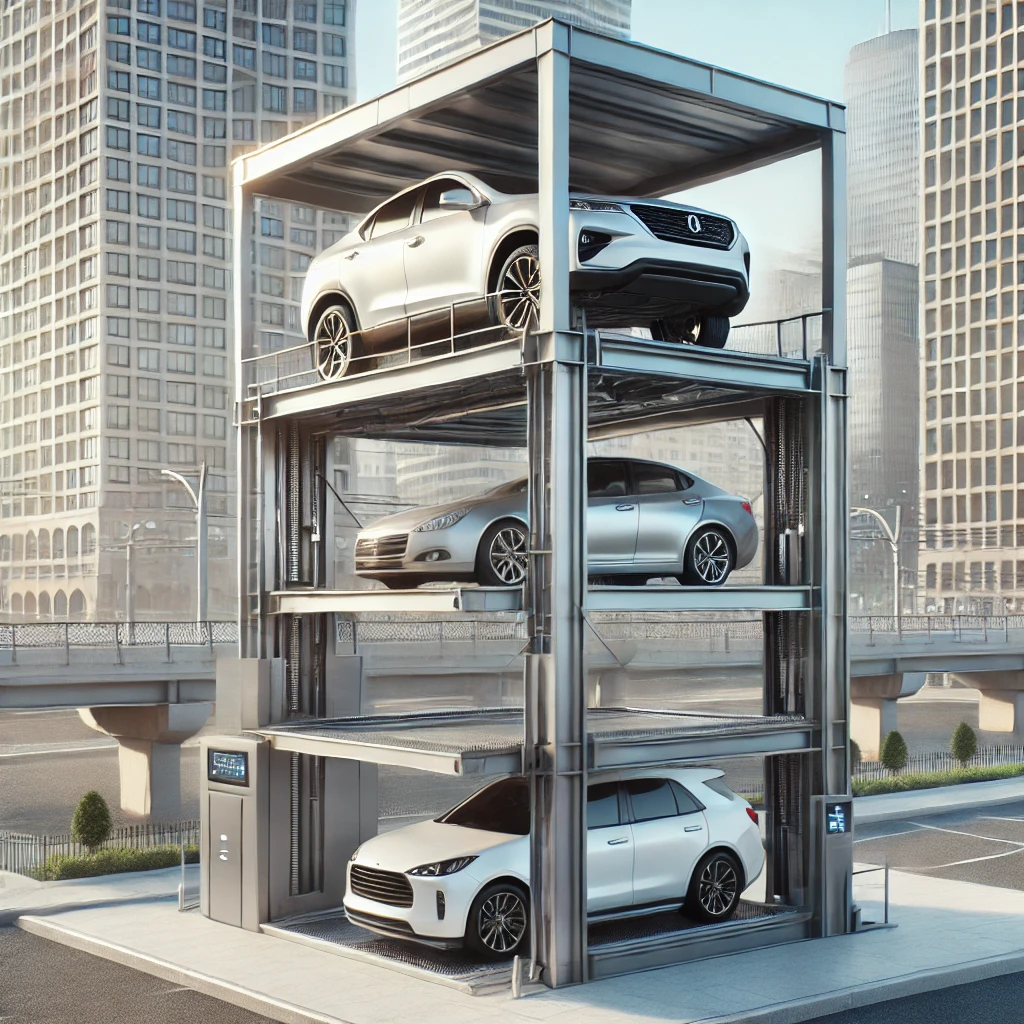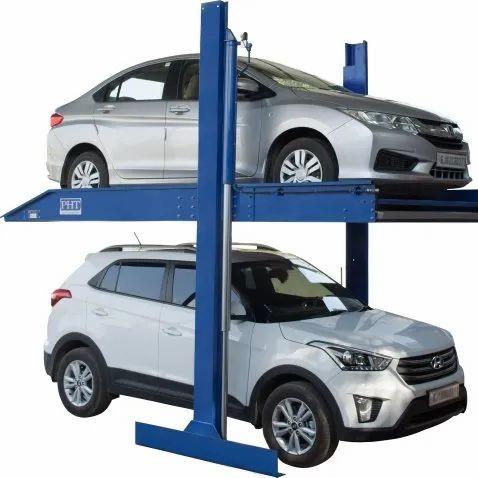The Rise of the Car Stack Parking System: A Smart Solution for Urban Space Management

Strong 8k brings an ultra-HD IPTV experience to your living room and your pocket.
With rapid urbanization and a growing number of vehicles in metropolitan areas, traditional parking spaces are proving to be insufficient and inefficient. As cities continue to expand vertically, so must their infrastructure including parking. This is where the Car Stack Parking System steps in as a game-changer. By allowing multiple cars to be parked in a vertically stacked structure, this system provides a practical solution for cities struggling with limited land availability and increasing vehicle density.
What is a Car Stack Parking System?
A Car Stack Parking System is a mechanical parking solution designed to utilize vertical space to park multiple vehicles in a single footprint. These systems can be manually, semi-automatically, or fully automatically operated, offering various levels of convenience and efficiency. The stacked design allows for two or more cars to be parked vertically, one above the other, using hydraulic lifts or electric motors.
Types of Car Stack Parking Systems
1. Two-Level Stackers
This is the most basic form of the stack parking system, allowing one car to be parked on the ground level and another elevated above it.
2. Three-Level Stackers
A more advanced version of the two-level system, this design allows three cars to be stacked in a single bay, offering maximum space optimization.
3. Pit-Type Stackers
Designed for basements or lower-ground levels, this system hides the lower car below the ground, preserving surface aesthetics.
4. Automated Stack Systems
Equipped with sensors and computer-controlled operations, these systems automatically lift, align, and place vehicles in the assigned slot without human intervention.
Why Urban Areas Need Car Stack Parking Systems
1. Limited Space Availability
As cities become more congested, the space available for traditional parking lots is shrinking. The vertical design of stack systems makes it possible to park multiple cars in the same ground area.
2. Rising Real Estate Costs
Land in urban centers comes at a premium. The cost-effective nature of stack systems ensures that developers can provide sufficient parking without allocating vast tracts of land.
3. Environmental Impact
By reducing the land footprint needed for parking, these systems help in preserving green zones and reducing the urban heat island effect caused by wide concrete parking lots.
4. Improved Aesthetics
Modern stack parking structures can be integrated seamlessly with building designs, maintaining the visual appeal of residential or commercial complexes.
Benefits of Using a Car Stack Parking System
1. Space Efficiency
These systems can multiply parking capacity without expanding horizontally. A single unit can hold two to three cars, sometimes more.
2. Time-Saving
Automated systems significantly reduce the time spent searching for parking. They can retrieve and park cars in a matter of minutes.
3. Safety and Security
Vehicles are securely stored in an enclosed or semi-enclosed structure, minimizing the risk of theft, damage, or vandalism.
4. Cost Efficiency
Although the initial installation may seem expensive, the long-term savings on land costs, security, and maintenance make it a financially smart choice.
5. Reduced Carbon Emissions
Faster parking times and reduced vehicle idling help in cutting down on fuel consumption and greenhouse gas emissions.
How Does a Car Stack Parking System Work?
At its core, a Car Stack Parking System uses mechanical lifting technology, which could be hydraulic or electric. The basic operation involves:
Car Enters the Platform: The driver drives the car onto the designated platform.
Activation of the Lift: Once the car is in position, the system lifts the car using hydraulic or motorized lift systems.
Lower Slot Becomes Available: The space underneath the lifted platform becomes available for another car.
Retrieval Process: When the upper car needs to be accessed, the lower vehicle is removed, and the lift brings down the upper car smoothly.
More advanced systems can automate this entire process, requiring no human interaction other than initiating the command to park or retrieve the car.
Applications of Stack Parking Systems
1. Residential Buildings
Many apartment complexes struggle with providing sufficient parking. Stack systems allow developers to offer adequate parking spaces even in restricted areas.
2. Commercial Complexes
Malls, office buildings, and business centers can benefit from the efficiency and sophistication of car stackers, especially in high-traffic areas.
3. Hotels and Hospitals
Facilities that experience peak-time congestion need smart parking solutions to manage flow and reduce waiting times.
4. Urban Plazas and Public Parking
Municipalities are adopting these systems to modernize public parking infrastructure and encourage better urban planning.
Challenges and Solutions
1. Initial Investment
While the setup cost of a Car Stack Parking System may be higher than traditional parking, financing options and long-term ROI can make it worthwhile.
2. Maintenance Requirements
Mechanical systems require regular servicing to ensure smooth functioning. Partnering with reliable service providers ensures minimal downtime.
3. User Awareness
Some drivers may be hesitant to adopt automated or stack-based parking due to unfamiliarity. Public education and simplified interfaces can help increase adoption rates.
Innovations in Stack Parking Technology
With advances in IoT, AI, and robotics, stack parking systems are evolving rapidly. Some of the latest innovations include:
Smartphone Integration: Apps that allow users to reserve spots, control lifts, and receive real-time updates.
License Plate Recognition: Automated vehicle identification for seamless entry and exit.
Energy-Efficient Systems: Solar-powered lifts and regenerative braking systems to save energy.
Modular Designs: Easily expandable systems that can be customized based on property requirements.
Environmental and Social Impact
The Car Stack Parking System is not just a convenience tool; it's a sustainable urban infrastructure component.
Land Conservation: By using vertical space, cities can retain more land for parks, housing, or commercial purposes.
Noise and Air Pollution Reduction: Reduced vehicle movement within parking areas helps cut down emissions.
Enhanced Quality of Life: Organized parking reduces stress, road rage, and traffic snarls, contributing to a healthier urban environment.
Future of Car Stack Parking Systems in Smart Cities
Smart cities require smart infrastructure. The Car Stack Parking System is poised to play a central role in the next phase of urban development. Its integration with real-time data systems, AI-driven optimization, and energy-saving components makes it an ideal candidate for inclusion in smart city planning.
Governments and city planners are already experimenting with policy incentives and pilot programs to incorporate these systems into new developments. In the coming years, it is likely that stack systems will become a common feature in both public and private projects.
The Car Stack Parking System is more than a mechanical innovation it’s a forward-thinking solution tailored for the challenges of modern urban living. With cities becoming denser and space becoming scarcer, this system offers a practical, scalable, and eco-friendly alternative to traditional parking methods. As we step into an era where sustainability and smart living go hand in hand, the widespread adoption of stack parking systems could redefine how we look at urban mobility and infrastructure. Embracing this change not only optimizes space but also contributes to a cleaner, more organized, and efficient city life.
Note: IndiBlogHub features both user-submitted and editorial content. We do not verify third-party contributions. Read our Disclaimer and Privacy Policyfor details.



